

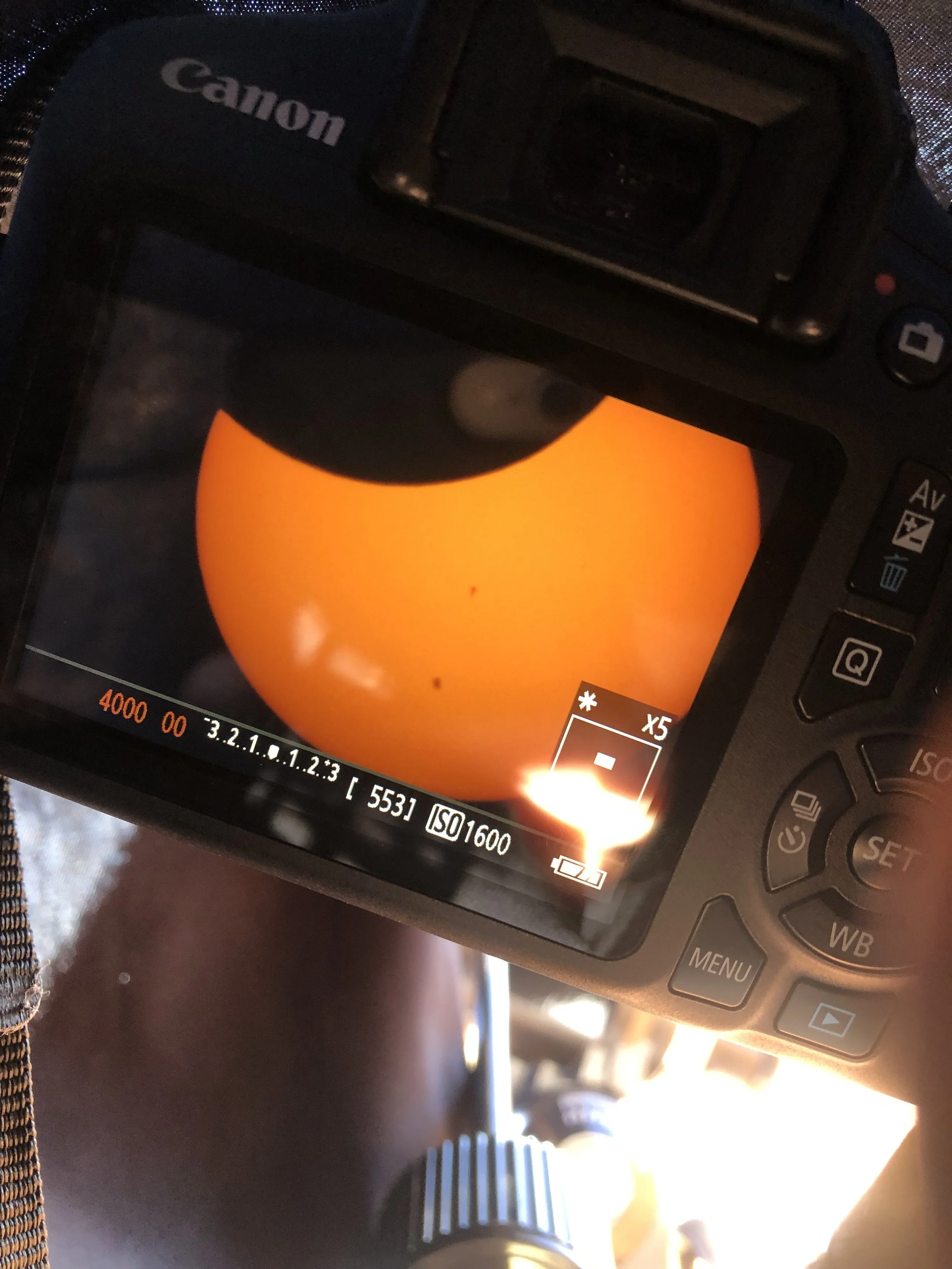



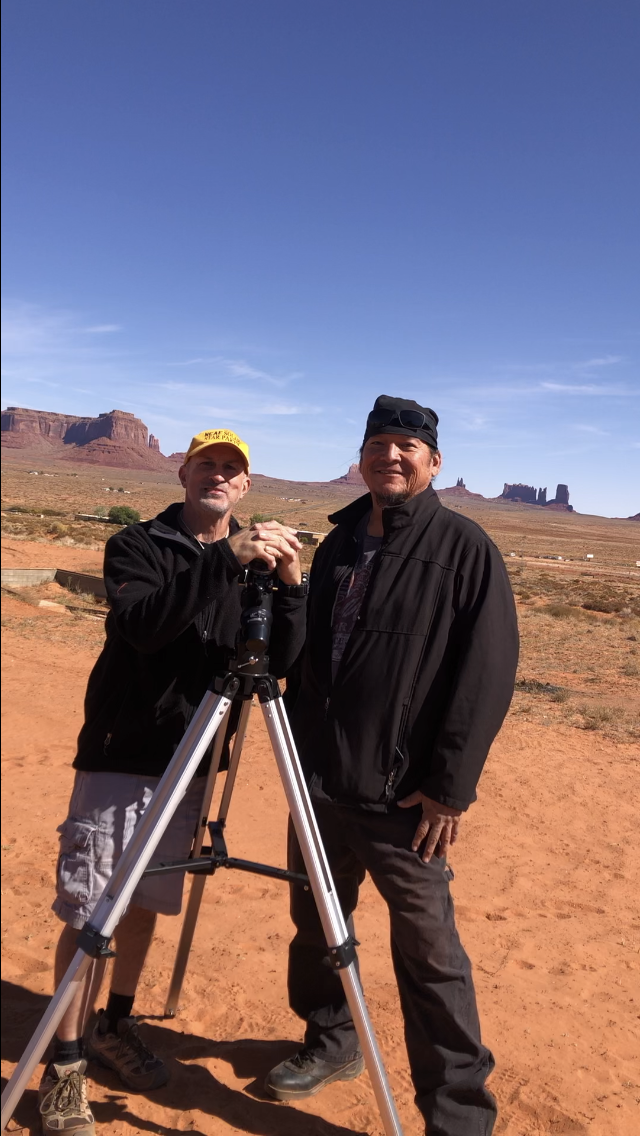
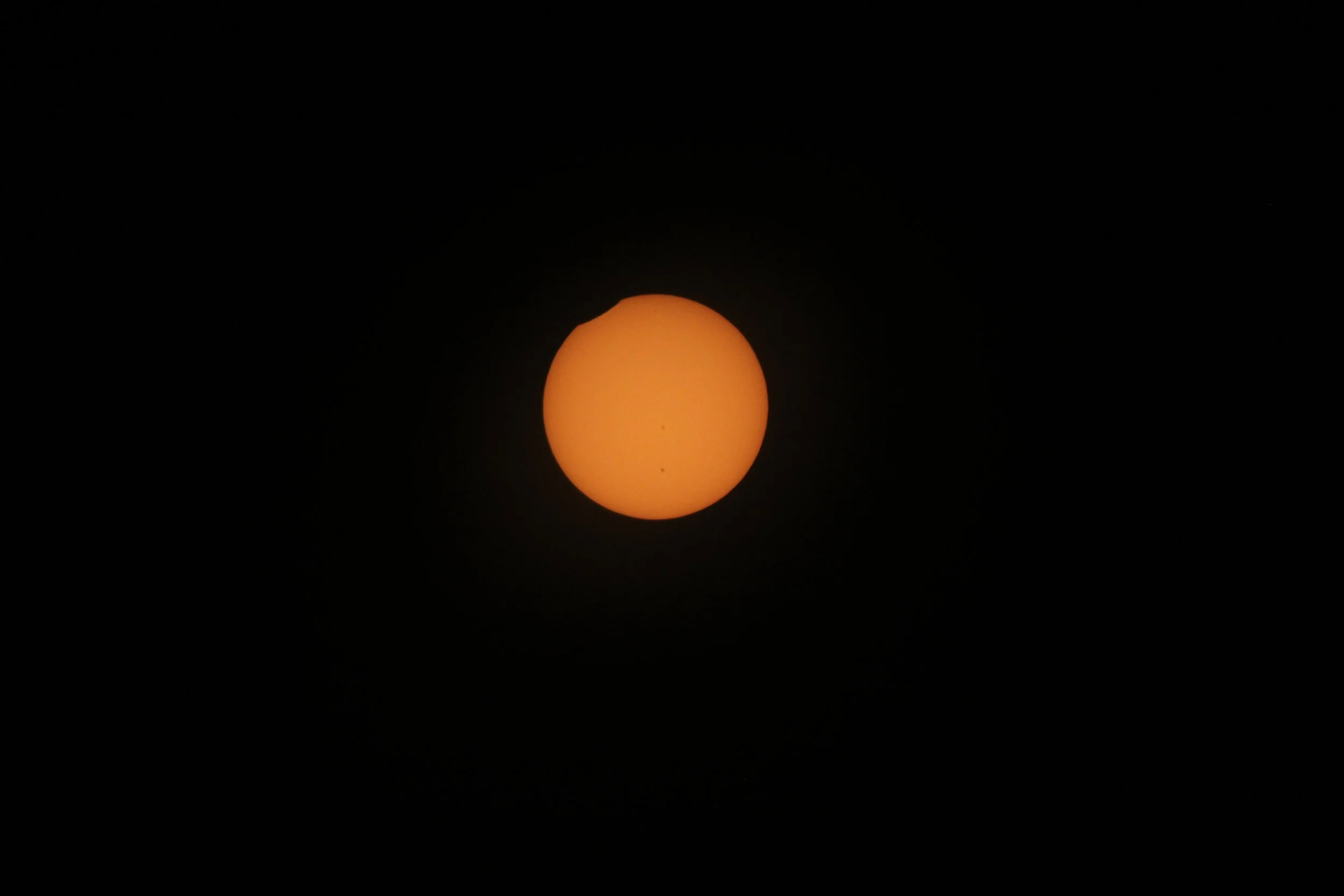




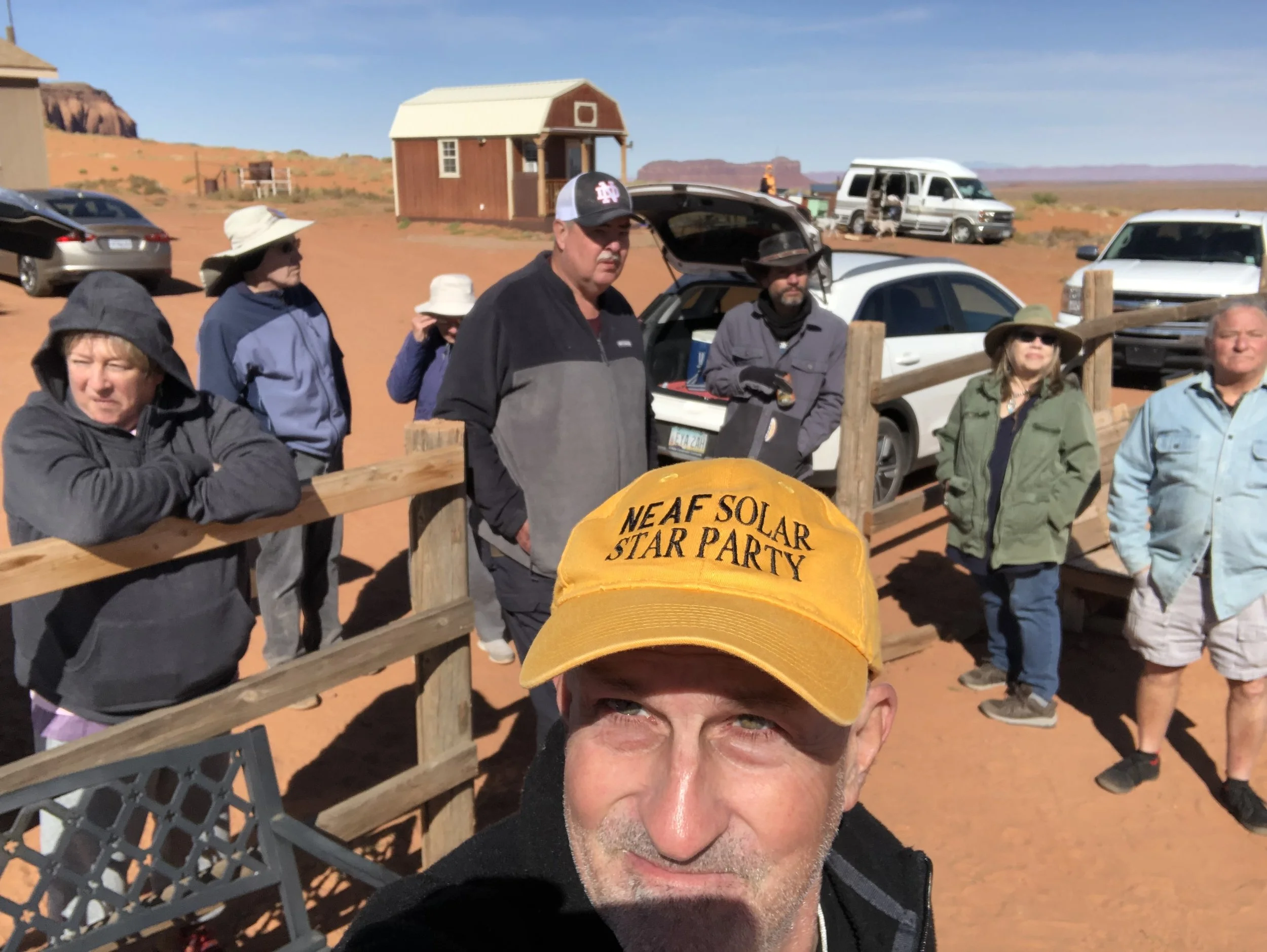

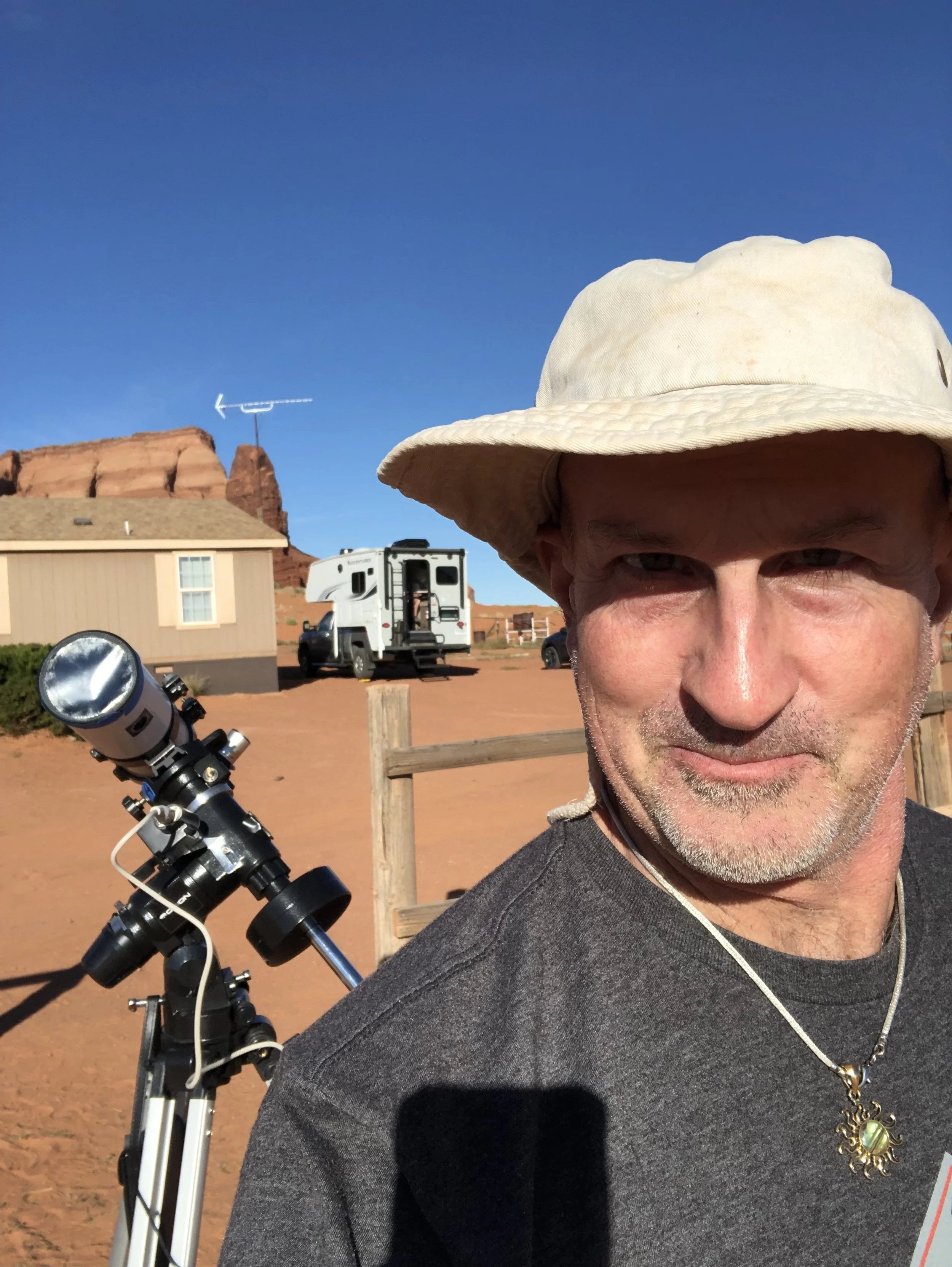

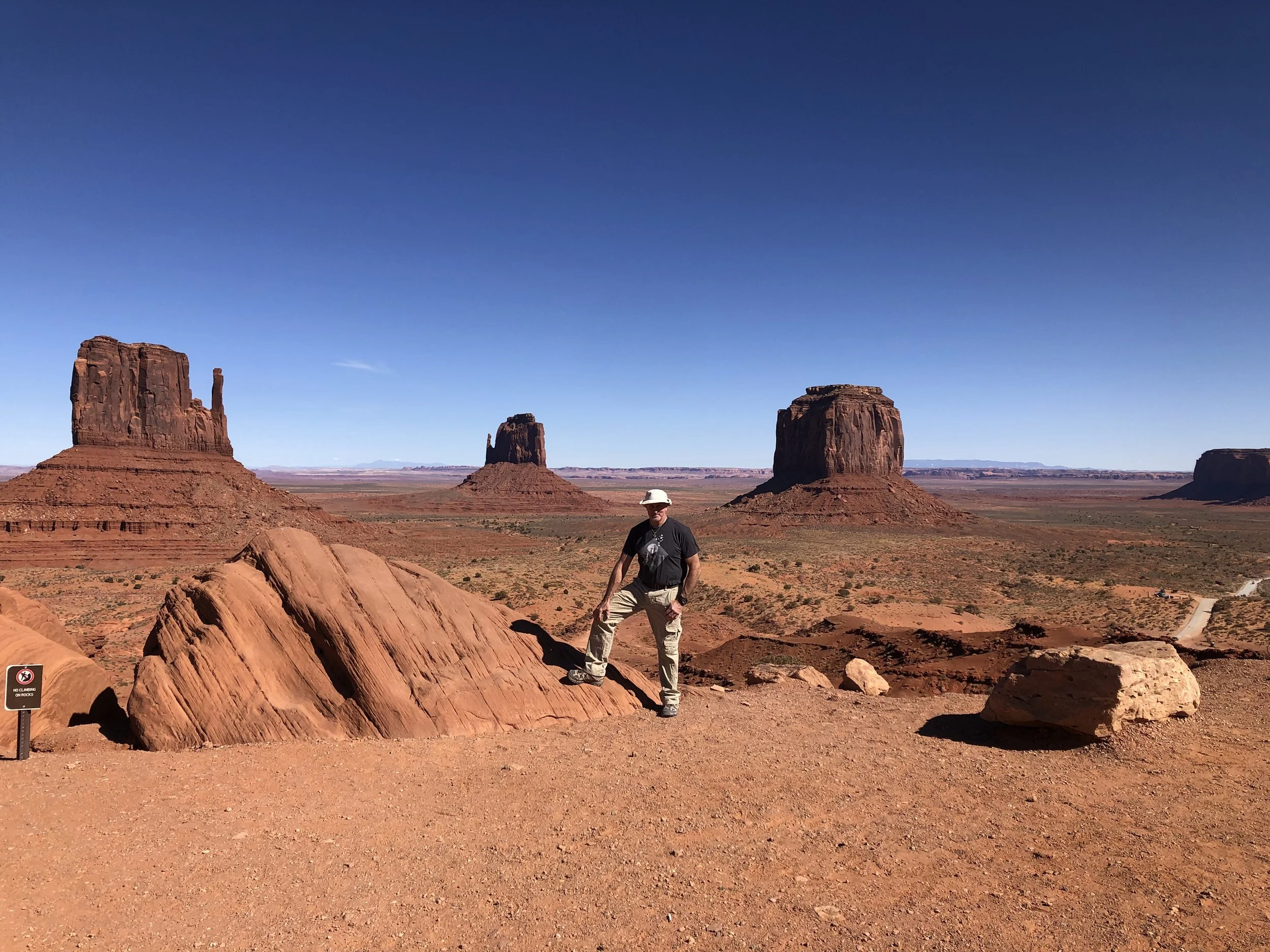


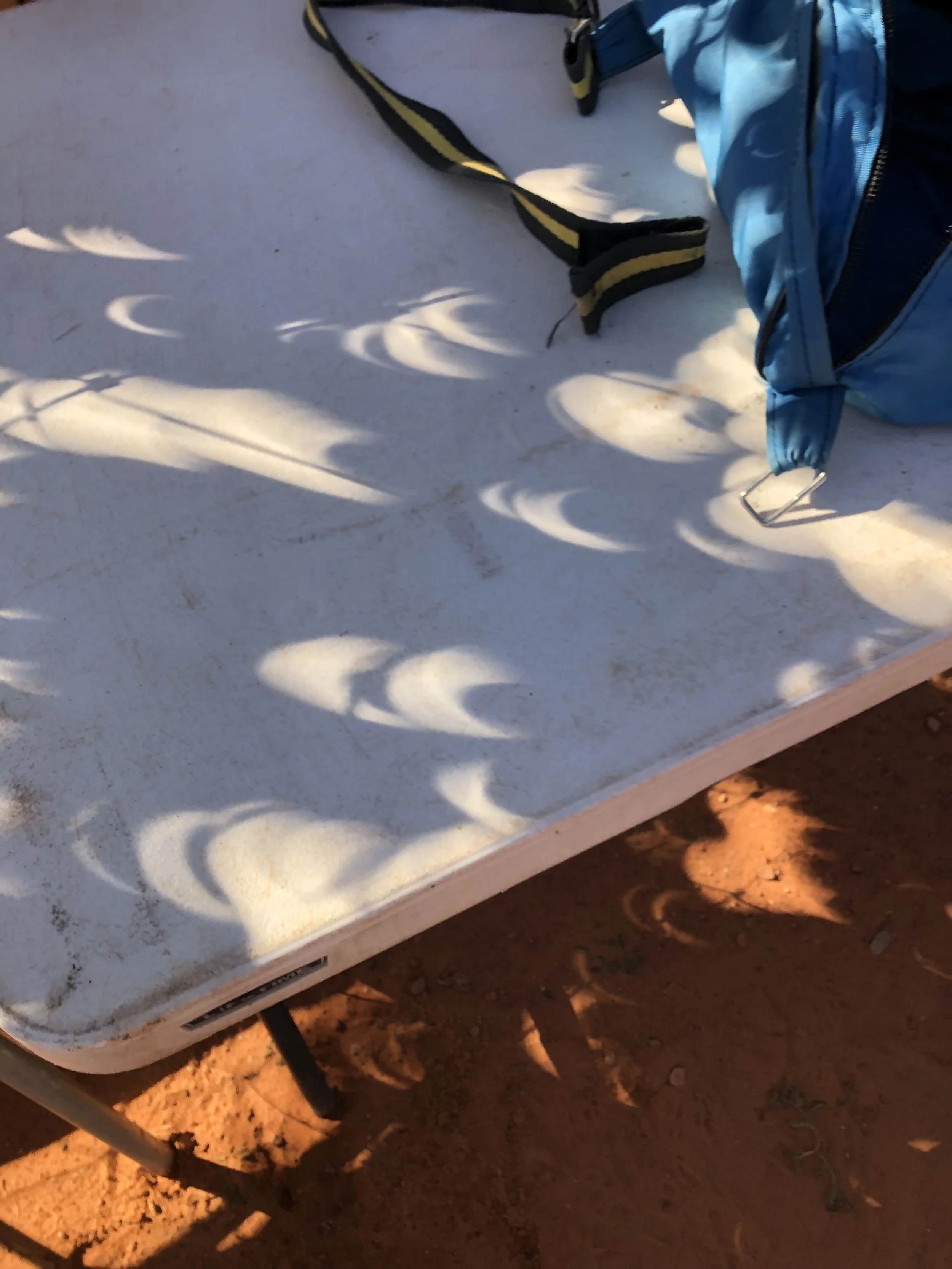

PLEASE SCROLL DOWN FOR PHOTOS.
An unbeatable opportunity. Arizona. Monument Valley. And oh.. my FIRST Annular Solar Eclipse!
I sat at my computer doing my trip planning. The frustration mounted. Booking the flight to Phoenix, getting the car rental, planning the itinerary all went smoothly. The problem was finding a place to stay at Monument Valley- one of the most spectacular landscapes on Earth. Every hotel, motel and lodge was booked solid the night before the eclipse. Phone messages, calls, emails and texts went nowhere. Except for one! A text came back to me (from an unanswered phone call) from Ilene, owner of the Teardrop Arch Bed and Breakfast in Oljato-Monument Valley, UT. Ilene had a room! And so I was all set! I’d be in the Navajo Indian reservation to view and photograph the annular solar eclipse of October 14, 2024.
My initial plan was to photograph the eclipse in Monument Valley park. The backdrop of the massive 1000 ft. tall buttes would be picturesque. However the Navajo nation decided to close the park due to their ancestral tradition of avoiding solar eclipses. Rather, they pledge to stay “safe” indoors and avoid being outside in the aura of diminished light, or totality. This park closure was respectable for me, and only a challenge to be met in finding a suitable location to view and photograph the eclipse. One always prefers a scenic location to be at to experience a solar eclipse. After arriving at the B&B on Thursday October 12th after sunset, I had decided it was the perfect location to photograph the eclipse. You can actually see the enormous West and East Mittens and Merrick buttes from the front door of the B&B (and my bedroom window!). On Friday the 13th there was plenty of time for a practice setup with a few solar shots, a visit to the Forrest Gump highway, and a nice drive thru Monument Valley Park. My host Ilene provided a warm welcome - her home was my home. Handcrafted Navajo art for sale tempted me (I ended up buying some goodies). I was allowed to make my own breakfast of eggs, toast and coffee. It was comfortable and full of spirit.
Eclipse Day! The temperature at sunrise was in the high 30’s, a frigid autumn morning in the desert southwest. Weather reports from the previous two days were threatening. High cloud decks were forecast to traverse the eclipse path, from northern Arizona into western New Mexico. It was relief and quite a delite to have clear skies that morning. I rose early to make sure I was fully set up and ready to shoot the eclipse. A few other folks were staying at the B&B, some in campers and tents. Including a nice Italian couple who were oblivious to the upcoming solar eclipse. Their lack of enthusiasm upon hearing of this very rare astronomical event was, to say the least, disappointing and somewhat even comical. How can anyone not embrace the moon passing in front of the Sun, blocking it out except for a thin ring around the edge? This is a natural phenomenon that occurs between dozens to hundreds of years apart at any given location on Earth. Here in Monument Valley Utah, the next annular solar eclipse won’t occur for hundreds of years. Much less a total solar eclipse. Solar eclipses are such a rarity to experience, and I still wonder how people could not be aware of them, understand their occurrence, and rise to the occasion to view one when it’s happening at their location.
I was set up in the soft red sand just outside the B&B. The view was fantastic! As I peered into my cameras viewfinder I noticed a tiny bite taken out of the Sun as the moon began it’s transit across. It’s always exciting to see the beginning of the eclipse, like, wow it’s really happening! As the partial phase progressed, I took snapshots every 10 minutes or so. The conversations with my fellow guests were enlightening. We all shared our observations. One man and his wife had a 6” Newtonian reflector for viewing, while others just used their eclipse glasses. We all shared the views of the eclipse through the others equipment. We observed and took pictures of a trees leafs as they casted “shadows” of the partially eclipsed Sun. This is called pinhole projection as the light of the ecliped Sun goes thru the spaces in the tree’s leaves. (pictures below) Everyone was gleeful and quite aware that the surrounding landscape started dimming in an eerie light typical of the partial phase of the solar eclipse. The air temperature started dropping as our hands starting getting cold! The eclipse began shortly after 9 am local time as the Sun rose and the air started warming. By the time annularity arrived all the warmed air had cooled as the Sun was some 91% blocked and we experienced a drop of about 15 degrees F!
Speaking of annularity, around 10:30 local time the “Ring of Fire” was visible and I witnessed my first annular solar eclipse! The view in the camera was breathtaking, and even more impressive thru the filtered binoculars and eclipse glasses! The surrounding landscape, to my surprise, was not as dim as I expected. Even with only 10% of full Sunlight beaming down to our spot on Earth, daylight persisted. The dimming effect was nowhere near what is experienced with a total solar eclipse. I shot annularity every few seconds, taking time to also enjoy the view away from the camera. Ohhs and Ahhs were prevalent and we all cheered the eclipse. There were high fives! My new Navajo friend, Andy, (Ilene’s boyfriend) marveled at the view. Andy is of a rebel frame of mind and did not choose to observe Navajo tradition of avoiding the eclipse. He was rewarded with a rare celestial sight and was appropriately amazed!
Only eight annular solar eclipses will occur worldwide from 2024 thru 2034. None will be visible from the United States. All but one will occur in the southern hemisphere.